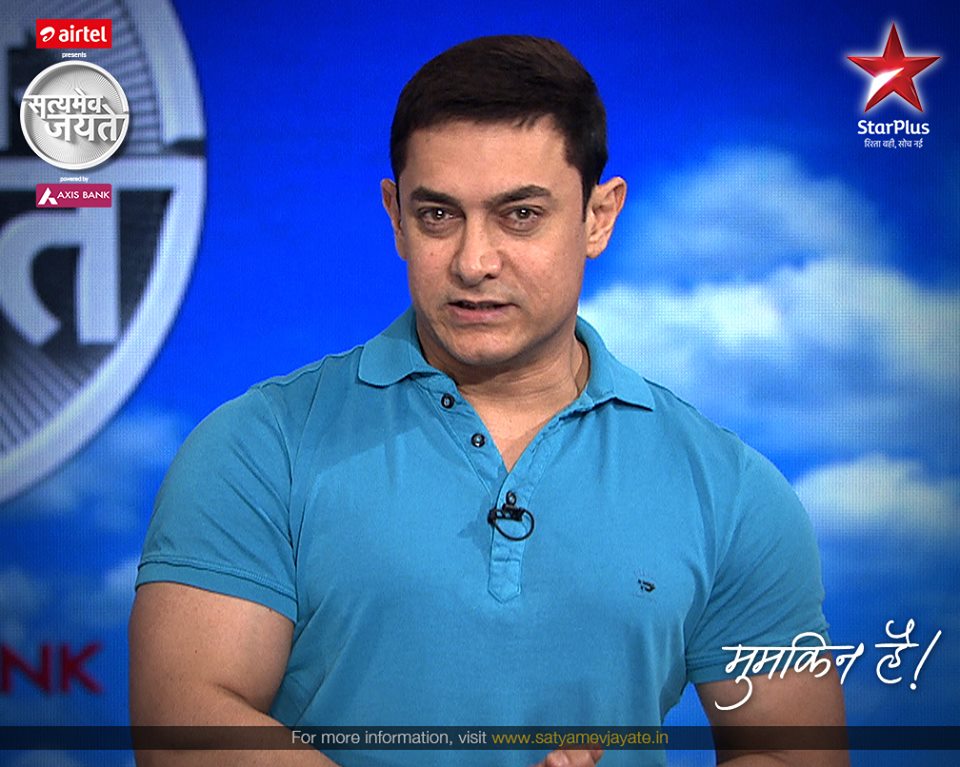
With this Sunday’s episode on Acceptance of Alternate Sexualities, Satyamev Jayate and Aamir Khan have proved that the show is not afraid to take on topics still considered taboo by the Indian society, and untouchable by our politicians. Social media and gay groups have been abuzz about the impact that the show had and will have. Surprisingly, twitter was free from the hate and deriding comments which usually follow any discussion on homosexuality. Was it because of the impactful episode, or were the trolls too busy with the state election results? While the stories of individuals would have touched many, the importance of the people and stories picked up by Aamir and his team at Satyamev goes far beyond just bringing forth stories of pain.
I must say, I was elated to see Gazal and her family on the show, not just because her story was an inspirational one (and reflects the struggles of many transgender people), but because it is extremely rare to find media portrayal of Sikhs while talking about alternate sexualities. The only portrayal of Sikh men in the media seem to be that of a hyper-masculine heterosexual one, the Sunny Deol of Gadar who can uproot a hand-pump and fight the whole of Pakistan, whether in Gadar, or in Border. The rigid patriarchal setup of Punjab makes any deviance from gender roles even harder. A state where the preference for male child has led to the lowest sex ratio in the country, is also a state that places very high pressure on men to enact the gender roles, and hetero-normal roles as well. When I came out to a cousin, he told me, “Our Punjabi community will not be able to digest this,” and advised me to try and get into the “depths of women”. Featuring Gazal (when it could actually have been anyone else), who hailed from Punjab and belonged to a Sikh family, not only highlighted transgender struggles, but also provided visibility to queers in Sikh community. Visuals are very important, and portrayal in mainstream media has subtle and subconscious effect on the mind. For many queer Sikhs, there are often no role models around. In fact, leave role models, there is hardly any LGBT Sikhs to identify with. I have lost count of the times I have heard someone say, “Are there gays in Sikhs too?”, or among fellow Sikhs and Punjabis, “We don’t have such people in our community.” A whole neighbourhood coming on Television and telling that they have had no problem accepting Gazal or her transition gives out hope to many, especially queer Sikhs, who now have someone to relate to. This acceptance did not happen by some “others”, but by their “own” community member.
A major focus of the show was on parental acceptance, which is one of the most important things for a queer child. Often, such children face rejection and violence at home from parents, as Simran narrated. If Gazal’s story informed the viewers of how parental support can help a queer person overcome the many obstacles; Simran’s story highlighted the darker side of the struggles of a queer child – how parental rejection can wreck havoc on a child. It is easier to fight the world, but the most difficult battles are the ones that you have to fight at home, and if you lose that, you often find yourself broken. The two stories together would force many parents to think what kind of life they would want for their child.
Marriage is another issue that queer people have to deal with, and many succumb to the pressure falsely believing that they might “change”. Satyamev Jayate made sure that the issue is not missed. Often, when this topic is raised, the focus is always gay men and how they get affected, proving again that it is a man’s world out there. But the show instead chose a queer-divorced woman to highlight the issue. Divya’s story was unique not just because she was in a heterosexual marriage and was able to break from it after 10 years, it was also unique because her story highlighted another important aspect- that for many, realization happens at a later stage of adult life. Sexuality politics has often put forward one kind of narration before the larger public – of realization of same-sex attraction during the teens. But there are others for whom the realization happens much later in their adult life, as was the case with Divya.
The show also ensured that they picked up people from four different parts of the country, belonging to different religions, thus covering as wide experiences as they could. It was though sad to see that while Satyamev Jayate covered the LGT sections, they seemed to have left out bisexuals and trans men. These two sections often get invisibilised and misunderstood within the LGBT community itself, and sadly, Aamir and his show also seem to have ignored them.
Given how the show has acted as a catalyst in bringing about reforms in the law previously, it remains to be seen when Sec 377 will be deleted from the rule books. But there remains little doubt that the episode helped win many allies for the LGBT community.

